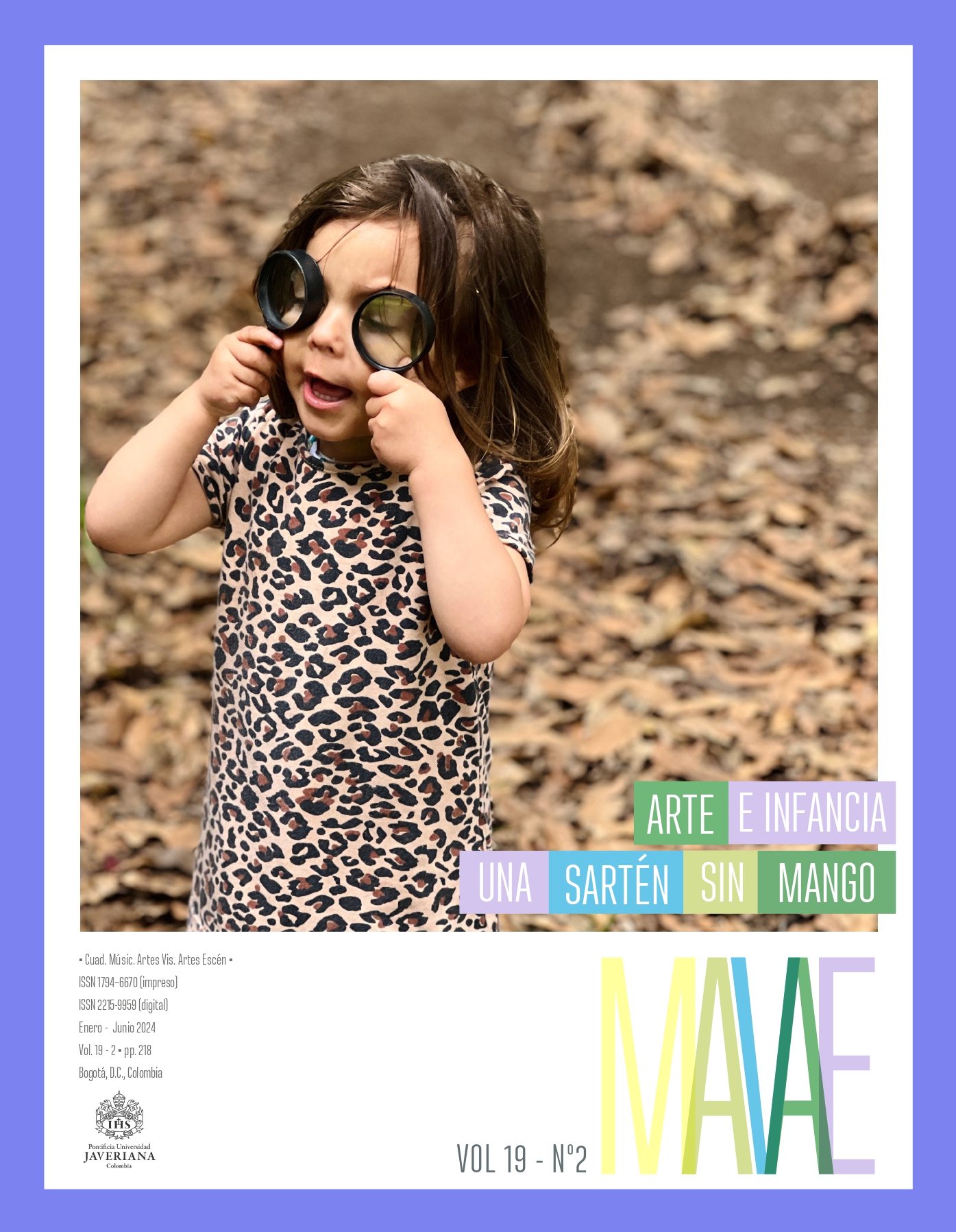Abstract
This article is a reflection around the perception which contrasts childhood and adulthood. It compares the qualities which make childhood savage and observes the domestication process that adult trainers exercise over the children, while it invites to speculate on the role of the teacher and to question the practices stipulated at this level of training. The article proposes the figure of the educator-mediator so that the Arts subject is not reduced to the development of motor skills, but rather explores and expands the possibilities for childhood to be a space that allows imagination, the development of creativity and critical thinking in visual culture. The relevance of the visual arts class in a preschool education level is addressed in order to discuss the role of this subject in a hierarchical system by disciplines considered as priorities, questioning criteria that establish expectations and evaluations in an indeterminate and subjective field, such as art. The text links narratives that interweave and open up four reflections. These expose considerations around the prioritization of spaces of control and care over learning, the vindication of creativity as a capacity allied to transdisciplinarity, the rediscovery of childhood and the awareness of the adult role in teaching and the need for the arts to be a disruptive space with the voracious curiosity and capacity for wonder inherent to childhood.
Acaso, María. 2009. La educación artística no son manualidades: Nuevas prácticas en la enseñanza de las artes y la cultura visual.
Madrid: Catarata. Aprendemos Juntos. 2024. “V. Completa: Una vida dedicada a la creatividad y la infancia. Arno Stern, investigador”. https://www.youtube.com/watch?v=bCe4jKYy8K4
Barbosa Ortiz, Sonia A., Carlos Andrés Rivera Escobar, Vanesa Rodríguez Villamil y Juliana Rosas Rodríguez. 2019. “La fantasía
como agente de resistencia”. Artes La Revista, 17, n.º 24: 160-175. https://revistas.udea.edu.co/index.php/artesudea/article/
view/340446/20795378
Belsky, Gail. 2024. “¿Qué son las habilidades motoras finas?”. https://www.understood.org/es-mx/articles/all-about-fine-motor-skills
Camnitzer, Luis. 2024. “El arte como forma de conocimiento”. https://core.ac.uk/download/pdf/75996641.pdf
Cartwright, Lisa y M. Sturken. 2009. “Scientific Looking, Looking at Science”. Practices of Looking: An Introduction to Visual Culture, 347-387. Oxford: Oxford University Press.
Colombia Aprende. 2024. “Derechos básicos de aprendizaje”. https://www.colombiaaprende.edu.co/contenidos/coleccion/derechosbasicos- de-aprendizaje
McArdle, F. 2005. “What if? Art as Language in Early Childhood”. Every Child 11, n.º 2: 6-7. https://files.eric.ed.gov/fulltext/ED488937.pdf
MinEducación (Ministerio de Educación Nacional). 2010. Orientaciones pedagógicas para la educación artística en Básica y Media.
Bogotá: MinEducación. https://www.mineducacion.gov.co/1621/articles-241907_archivo_pdf_evaluacion.pdf
RAE (Real Academia Española). 2024. “Creatividad”. En Diccionario de la lengua española. https://dle.rae.es/creatividad?m=form

This work is licensed under a Creative Commons Attribution 4.0 International License.
Copyright (c) 2024 Juliana Rosas


